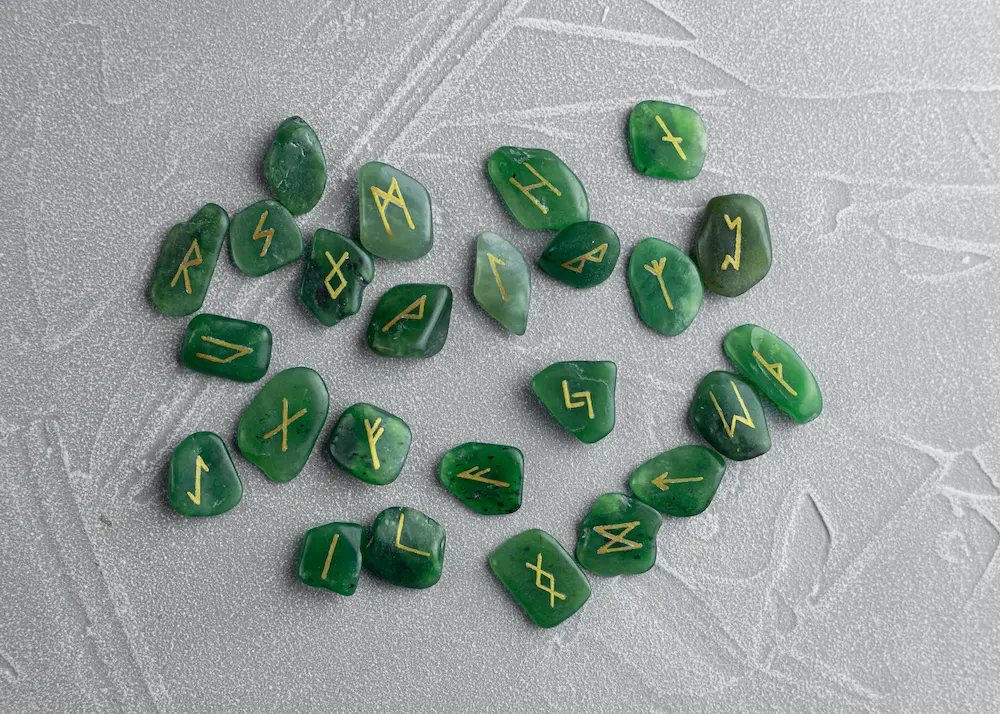
Witch's Holidays; Pagan Holidays for Beginners
Last Updated: July 25, 2023
Dependant on your path, your preferences or your deities, witches celebrate the year in very different ways. From the Celtic celebrations to the lunar phase Esbats, each month and season is celebrated with its own rituals.
The power of these ancient festivals continues to be celebrated today by modern witches, pagans, druids and spiritualists around the world. Whether it’s for a seasonal festival or a celebration of one of the many gods or goddesses, there is something special about connecting with our ancestors and honouring their traditions in our own way.
Which Pagan Holiday To Celebrate and Where To Start?
Many of us mark the festivals on or near their traditional dates, but for some this is not possible and they may choose to celebrate these important times in other ways. You might like to honour the festival with an afternoon of meditation, create a special ritual or craft your own wands and potions to celebrate the occasion. What you can do though is focus on your path’s preferences, and start from there – that’s my number one tip on pagan holidays for beginners. Those big on Hellenic practices may include more Greek holidays, or those who work with the dead and their ancestry deeply may prefer the many festivals of the dead.
The lunar month has a traditional cycle that relates to the moon’s phases, which can be easy to follow and to weave into your monthly practice. On these Esbat days (New Moon, Full Moon) witches are known to perform rituals, such as drawing down the moon, blessing their tools, working for protection or healing and mythological magickal work. These range from the simple to the extravagant, and even leaving a glass of water out under a dark moon can impact your magickal practice. Just because you’re a witch though, it doesn’t mean you have to work with every single moon phase.
The eight points on the Wheel of the Year celebrate festivals that are associated with the changing of the seasons, and have been celebrated since pre-Christian times. These days mark changes in agricultural cycles, such as the solstice, and they often coincide with harvest times. These celebrations, like Samhain or Yule, generally involve thanking nature for her bounty and preparing for the winter months. If you’re big on a nature practice, you’ll love the eight wheel festivals.
The ancient Egyptians had their own festival calendar, with numerous days dedicated to gods, goddesses and other deities. The most prominent were the Opet Festival (honouring Amun-Re) and the Valley Festival of Khoiak (celebrating Osiris). These festivals are often celebrated by modern Kemetic witches or pagans in some capacity, such as through ritual and ceremony, and as their dates varied please use the below as a guide only and practice it in an intuitive way that feels right to your practice.
This following list of Pagan festivals celebrates the traditional dates when many witches and pagans from around the world mark more than the eight festivals of the Wheel of the Year. It is by no means comprehensive, as there are many more exciting and varied celebrations out there, and I encourage you to dig into your own ancestry and local cultural events that celebrate the soul of the places you are in, and enjoy connecting with your land, people and activities.
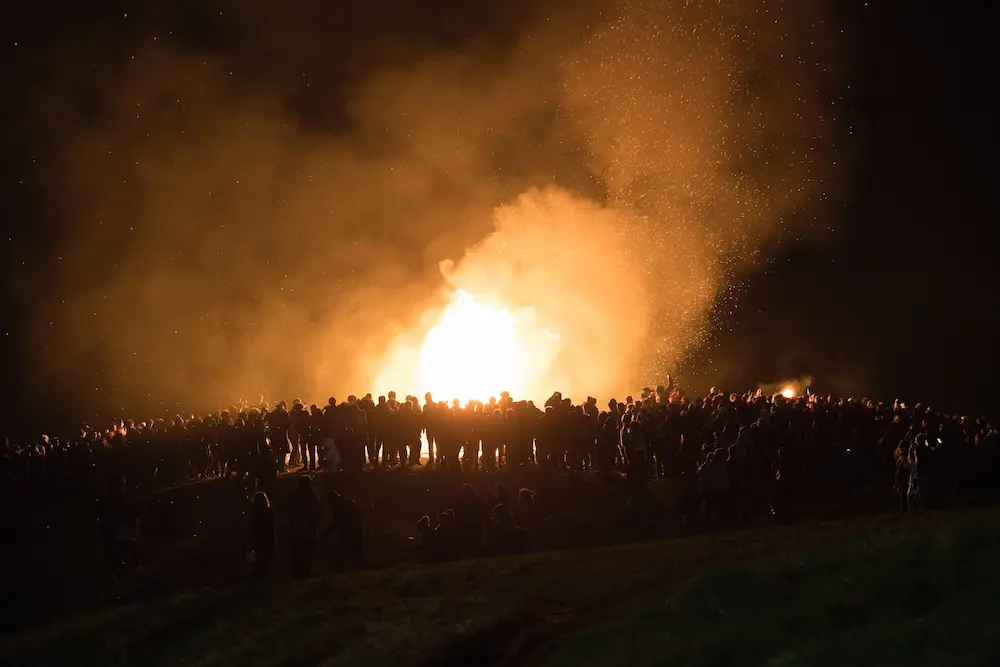
Appropriation vs Appreciation for Witch Holidays
As witches, pagans and spiritual folx our connection to the festivals of old is a powerful thing. It’s important that we remember when exploring these ancient celebrations to practice appreciation rather than appropriation. That means that we should be learning about the history, heritage and roots of the festival we are celebrating, as well as being respectful of the cultural context in which it was originally celebrated.
It’s also important to remember that not all witches celebrate sabbats as not all witches are Jewish or Catholic, and so honoring the terms of different cultures is also important. This also means not using other closed traditions in everyday settings for us if it doesn’t apply, such as the Native American Moon names or referencing prayers as jumu’ah.
Ultimately, as long as we are respectful and appreciative of ancient cultures, we can enjoy our own interpretation of witch holidays and use them as a way to connect with the divine and our magick, whatever this looks like for us. Whether you’re celebrating Samhain or Michaelmas, I wish for you the best of times and with a bonus sprinkling of magick + good luck to keep you safe.
January
Epiphany of Kore/Persephone (January 5th):
The ancient communities would gather to carry the statue of Kore, an aspect of Persephone, seven times around her temple, symbolizing the months she spent in the Underworld. Torches are aplenty, encouraging the Spring aspect of Kore/Persephone to be found, and this may be when the initial Eleusinian Mysteries started.
Perchta Night and Twelth Night (January 6th):
Perchta, also known as Berchta or Bertha or Frau Faste or Frau Perchta, is a goddess of winter and a leader of the Wild Hunt, sometimes seen as a terrifying crone who punishes the lazy in a very visceral fashion you’d not expect. This all now coincides with the Christian Twelfth Night marking the end of the twelve days of Christmas. Perchta oversees spinning, the art of weaving cloth, and animals. On this day or night, depending where in Europe they are celebrated, Perchta would visit to check that people had been good all year, and if they had she would leave a silver coin for them.
Disablot (January 31st):
Disablot was an ancient Norse sacrificial festival dedicated to the gods, including Freyja, Frigg, The Valkyries and the Norns. While the primary focus was on the female goddesses, it is possible that prayers or offerings may have been made to the Norns as well, recognizing their role in weaving the fabric of fate. The main point was to honor women who give their fertility and their lives, and to ask their favour in return. The name comes from Disir, who are female deities that honored women’s ancestors, and were felt to guard the living. Natural altars or shrines (horgr) where the Dísir were worshiped was called dísarsalr and a place you’d pray for luck to, especiaaly in times of war. This was typically the first festival and public gathering since the New Year.
Disting (Late Jan/Late February/Late March)
Around the time of Imbolc, Disting was a major pagan festival in Sweden, marking the beginning of the agricultural year. It involved various activities such as market gatherings, trading, and religious ceremonies. It was a time to honor the local deities and make offerings for a successful year ahead. Originally it was closer to the vernal equinox, yet since Christianity came in it has moved closer to Candlemas and lasts only three days.
The Festival of the Great Throne [Peretkhent] (January):
The Festival of the Great Throne celebrated the power and authority of the pharaoh. It was a time when the king would appear before the people, receiving their allegiance and demonstrating his divine right to rule. Rituals and processions were held to reinforce the connection between the Egyptian pharaoh and the gods.
February
Imbolc (February 1st):
Imbolc marks the beginning of spring and is associated with mother goddesses like Isis, Ceres, Demeter and Brigid. It is a time for purification, the lands transformation, new beginnings, and honoring the hearth and home. Traditionally, candles were lit to symbolize the return of light and the growing power of the sun.
St. Brigid’s Day (February 1st):
St. Brigid’s Day is celebrated in both Christian and pre-Christian traditions. It is associated with the goddess Brigid only and marks the beginning of spring. It involves making Brigid’s crosses, lighting candles, and honoring Brigid as a symbol of fertility, healing, and creativity.
Lupercalia (February 13 – 15):
An Ancient Roman festival associated with purification, fertility, and the honoring of Lupercus, the god of shepherds. Most modern day celebrations and ideology of St Valentines Day comes from Lupercalia, however many of the traditional elements, such as animal sacrifice, have been removed.
Parentalia (February 13-21):
Parentalia was a festival dedicated to honoring deceased ancestors. It was a period of remembrance and respect, during which families would visit tombs, make offerings, and perform rituals to appease and commemorate their ancestors.
Valisblót (Mid-February):
Valisblót was a Norse festival dedicated to winning of light over the dark. It involved the sacrifice of a boar to Freyr and Freyja, accompanied by feasting and games. This festival marks the beginning of spring, a time of hope, fertility, and renewal. It is celebrated around mid-February so look to local events.
Quirinalia (February 17th):
Quirinalia was a festival dedicated to Quirinus, the deified form of Romulus. It involved processions, offerings, and sacrifices to honor the deified founder of Rome. Very similar to modern day 4th of July celebrations!
Feralia (Feb 21st):
Feralia was a Roman festival held on February 21st to honor and appease the spirits of the deceased. While not specifically dedicated to the Moirai, it acknowledged the role of destiny and the finality of death, aligning with the broader concept of fate in Roman belief.
Sigrblót (Late February/Early March):
Sigrblót was a blót (sacrificial feast) dedicated to the gods to ensure victory and success in battles. It involved offering sacrifices to the gods, particularly Odin and Thor, and seeking their favor and protection.

March
Matronalia (March 1):
Matronalia was a festival honoring Juno Lucina, the goddess of childbirth and women. It was a time to celebrate and honor married women, mothers, and childbirth. Women received gifts and participated in rituals dedicated to Juno Lucina.
Aegir’s Day (March 3rd or July 25th):
The frost giant Viking deity of the Sea, and his more sinister partner Ran, rule the oceans and waves. Aegir is the more hospitable of the two, benevolent and calm when needed. Ran will pull anyone down below the waves to their deaths. The two (with their 9 daughters) live below the ocean, and yet are very familiar with the aesir gods. Regular feasts feature the pair, and so for Aegir’s day it is not only honouring the oceans, the tide and it’s takers for a Celtic/Nordic sea festival, but also brewing alcohol. Aegir brew up in a cauldron he got Thor to steal from other giants, and called upon the aesir to join in whenever the batch was ready! Ways to celebrate this day would be to give offerings of thanks to the ocean and it’s waters, as well as sharing a brew with friends.
Feast of Marduk (March 12th):
The ancient Babylonian New Year’s festival was celebrated to honor Marduk, the chief god in Babylonian mythology. It involved processions, sacrifices and prayers to plead for a successful year ahead. Referred to as ab-kal ilâni bêl terêti “leader of the gods” and bêl bêlim “lord of lords”, Marduk slayed Tiamat in her draconic appearance to become King of the Gods.
Equirria (March 14):
The Equirria was a festival associated with the Roman god Mars. It involved chariot races, horse races, and sacrifices to honor Mars as the protector of the Roman people. The first day is dedicated to Mars, while the second day is dedicated to Consus, an agricultural deity associated with grain storage.
Quinquatrus (March 19-23):
Quinquatrus was a festival dedicated to Minerva, the goddess of wisdom, crafts, and arts. It was primarily celebrated by artisans, especially those involved in trades such as weaving, painting, and sculpting. The festival included competitions, processions, and sacrifices.
Ostara and Spring Equinox (around March 21):
Celebrating the arrival of spring, fertility, light and dark, and new beginnings. This festival is typically associated with Deities Freyr, Idunna, Freyja, and Eostre.
Hilaria (March 25):
Hilaria was a festival dedicated to Cybele, the mother goddess of fertility and nature. It involved processions featuring statues of Cybele, offerings, and sacrifices meant to honor her power. Celebrations typically ended with feasting and revelry. Prior to this date were castrations, and after this date “The Washings”. Games and celebrations were had as soon as the nights were shorter than the days, after the equinox. The Festival of Hilaria was seen as an important precursor to the larger Festival of Cybele which began shortly after.
The Feast of Luna (March 31st):
This is the festival in dedication to the moon goddess Luna, and due to the opening of the Temple of Luna, or Aedes Lunae as it’s known. The temple actually burned down in the Great Fire of Rome, and was never rebuilt, but is a date still celebrated none the less. Reincarnation is a major theme for this goddess, so symbolism such as fruit falling from a tree but bearing seeds inside for future generations or how the water of the oceans evaporates to become cloud turned to rain, rushing down the hills to the rivers and oceans again. All of this type of symbolism is celebrated, so it would be a great night not just for revering our ancestry and who came before us but to also celebrate sexual union between couples (Luna had a consort who together they had the 50 different Menae offspring). Agricultural pursuits and horse racing would be honoured at this time too, as Luna had a chariot known as a biga pulled by two horses.
Dionysia (March):
Greek festival dedicated to Dionysus, featuring theatrical performances, revelry, and celebrations of wine and fertility. The timing of this festival is mixed – it’s also known as Anthesteria in February or in rural areas celebrated in December. The rural version of Dionysia we know is celebrated around the Winter Solstice, however the city of Athens celebrates Dionysia across the Vernal Equinox, whether around the 11th – 16th of March. This was an Ancient festival dedicated to Dionysus, celebrating the arrival of spring and the opening of wine jars, usually planned to start around the late February Full Moon. This was a time to celebrate joy and abundance in life, with feasts, drinking, and dancing. It was also a time for offerings and rituals dedicated to theatre, and for six days a competition ruled across Athens for the best entertainment in Dionysus’s honour.
April
Cerealia (April 12-19):
Cerealia was a major festival dedicated to Ceres, the goddess of agriculture and grain. It marked the beginning of the agricultural season and involved processions, theatrical performances, and offerings to ensure a good harvest.
Parilia (April 21):
Parilia was a festival dedicated to the purification of sheep and shepherds. It included rituals to cleanse the flocks and the shepherds themselves. Bonfires were lit, and offerings were made to protect against diseases and ensure the fertility of the flocks.
Vinalia (April 23 and August 19):
Vinalia was a festival celebrating the wine harvest. It included rituals and offerings to honor the gods of wine, particularly Jupiter and Venus. The festival had two parts: the Vinalia Priora in April for the old wine, and the Vinalia Rustica in August for the new wine.
The Ennead Travels (April 27):
The Ennead Travels is an Ancient Egyptian period celebrating the journey of the Netjeru travelling throughout the lands. Offerings and prayers were made to the gods in an effort to strengthen and reinforce the connection between the Egyptian pharaoh and the gods.
Floralia (April 28-May 3):
Floralia was a festival honoring the goddess Flora, associated with flowers and fertility. It was a joyful celebration of spring, with theatrical performances, games, and colorful processions. The festivities included dancing, music, and the scattering of flowers.
Walpurgis Night (April 30 – May 1):
Germanic festival marking the arrival of spring, bonfires, and warding off evil spirits. It is celebrated in northern Europe and Scandinavia, often around the time of Beltane. Offerings are made to various gods and goddesses associated with fertility, protection, and love. It is also a time for dancing and merrymaking.
May
Beltane (May 1st):
Beltane celebrates the arrival of summer and is associated with fertility and the union of the god and goddess called the Great Rite. Fire and fertility rituals were often performed in honor of Beltane. It involves bonfires, Maypole dancing, and rituals to ensure the fertility of the land, livestock, and people. It is a joyous celebration of life and abundance.
Rosalia (May 23 through to July):
Rosalia is the ancient Roman festival of roses. This would be a great time for folks to decorate their spaces with roses and violets, but most specifically for the beloved dead family members at burial sites as well as revered deities such as Flora (Chloris), Proserpina (Persephone) or Venus (Aphrodite). This festival of the dead honors the memory of those who have passed on from this world, and is a time to remember our ancestors, and is one of the reasons we present flowers in memoriam in the military.
Thargelia (May 24th and May 25th, respectively for each deity):
Greek festival dedicated to Apollo and Artemis, celebrating the harvest and purification. On the first day traditionally a human sacrifice was made, usually a criminal but it was also noted that “two of the most hideous looking men”, implying that just by being ugly you were likely to be a sacrifice – stoned, burned down, and the ashes thrown to sea. On the second day of celebration, however, a harvest of all the first fruits were offered, and children made olive-branch wards for protection for housing. Orphans and foster children were adopted on this day.

June
Vestalia (June 7th to June 15th):
Vestalia celebrates the goddess Vesta and the Hearth. It was a time for offerings, prayers, and rituals honoring Vesta as well as all the hearths in Greece and Rome.
Midsummer/Summer Solstice (around June 21):
Celebrating the peak of the summer, the longest day of the year, and the power of the Sun and is associated with Freyja, Baldr, Apollo, Helios, Sunna.
Litha (around June 21st-June 22nd):
Litha is a Pagan celebration of the Summer Solstice. It involves bonfires, rituals to honor the sun and its life-giving powers, as well as the full ripeness and abundance in life. It is a time of celebration and honoring the natural cycles of life, as well as making offerings to nature spirits, the Fae and deities associated with fertility, creativity and protection.
July
Aphrodisia (July 1):
Celebrating the goddess Aphrodite, associated with love, beauty, and passion. Offerings are made to the goddess of fire, incense and flowers, as well as participating in rituals of love and passion and strictly zero sacrifices other than a dove at the beginning of the festival to purify the space. This was also a time of no conflict, and harmony across all people regardless of political opinion or backgrounds.
The Epagomenal days (July 13th-July 21st)
The Egyptian year was divided into 36 decans, as each week was 10 days long, originally. To compensate astronomically, the arrival of the Netjeru provides us with the five missing days from Geb and Nut, so that all months were 30 days in length, with five divine gods and goddesses born each day. These five Epagomenal days we celebrate are:
- The Birthday of Osiris – July 14
- The Birthday of Horus the Elder – July 15
- The Birthday of Seth – July 16
- The Birthday of Isis (also known as The Night of the Cradle) – July 17
- The Birthday of Nephthys – July 18
Adonia (Late July but also Midsummer in rural areas):
Greek festival honoring the goddess Aphrodite and her lover Adonis, with rituals expressing grief and lamentation. They planted “Gardens of Adonis” – which was lettuce and fennel seeds, planted in potsherds – which sprouted before withering and dying, and the women-only celebration danced and sung upon the rooftops so that their laments could be heard wherever they celebrated. There wasn’t a specific dedicated space for celebrating Adonia, but in Egypt and Syria in the Roman period, the Adonia coincided with the rising of the star Sirius in late July.
Panathenaia (July 28 – August 4):
Athenian festival honoring the goddess Athena, including athletic competitions, a procession, and sacrifices.
Wep Ronpet [The Opening of the Year] (Late July/Early August):
Wep Ronpet marked the Egyptian New Year and the annual flooding of the Nile. It was a time of purification, renewal, and celebrating the cyclical nature of life. Offerings were made to the gods, and rituals were performed to ensure fertility and prosperity for the year ahead.
August
Lughnasadh and Lammas (August 1st):
Lughnasadh, also known as Loaf Mass or Lammas, marks the beginning of the harvest season. It is a time to honor the god Lugh and give thanks for the bounty of the land. Festivities include fairs, games, and feasting, as well as the making of corn dollies and the blessing of the first fruits.
Nemoralia (August 13 – 15):
Roman festival dedicated to the goddess Diana, involving processions, torchlight rituals, and offerings in the sacred groves. Hunting dogs would be dressed in garlands, wild animals wouldn’t be hunted or sacrificed, and it was a time to polish weaponry and spears.
Vulcanalia (August 23):
Vulcanalia was a festival dedicated to Vulcan, the god of fire and craftsmanship. It involved making offerings to Vulcan at his temples outside of the cities and performing fish into flame rituals to ward off fires and protect against destructive forces.
September
Mabon and Autumn Equinox (around September 21):
Recognizing the balance of light and dark, expressing gratitude for the harvest, and preparation for the darker half of the year. Offerings are made to deities associated with the harvest for Mabon, and rituals for protection, divination, and healing are performed.
Là Fhèill Mìcheil and Michaelmas (September 29th):
Là Fhèill Mìcheil, or Michaelmas, honors the archangel Michael and is associated with the beginning of autumn. It was an important festival in Gaelic traditions, particularly in Scotland. It involved feasting, horse racing, carrot harvesting, beach play, cockle hunting, and games, and was seen as a time to gather and celebrate before the onset of winter.
The Feast of Wagy (September 17th/New Moon)
Interestingly split as a date between the New Moon cycle of the month, and the 17th day of the New Year, the feast of Wagy was honored to Osiris’s death, with small boats made of paper set sailing to the west, and honouring the souls of the death on their journeys to the afterlife. You can read more about the academic findings for this feast in Anthony Spalinger’s “Further Thoughts on the Feast of Wagy”.
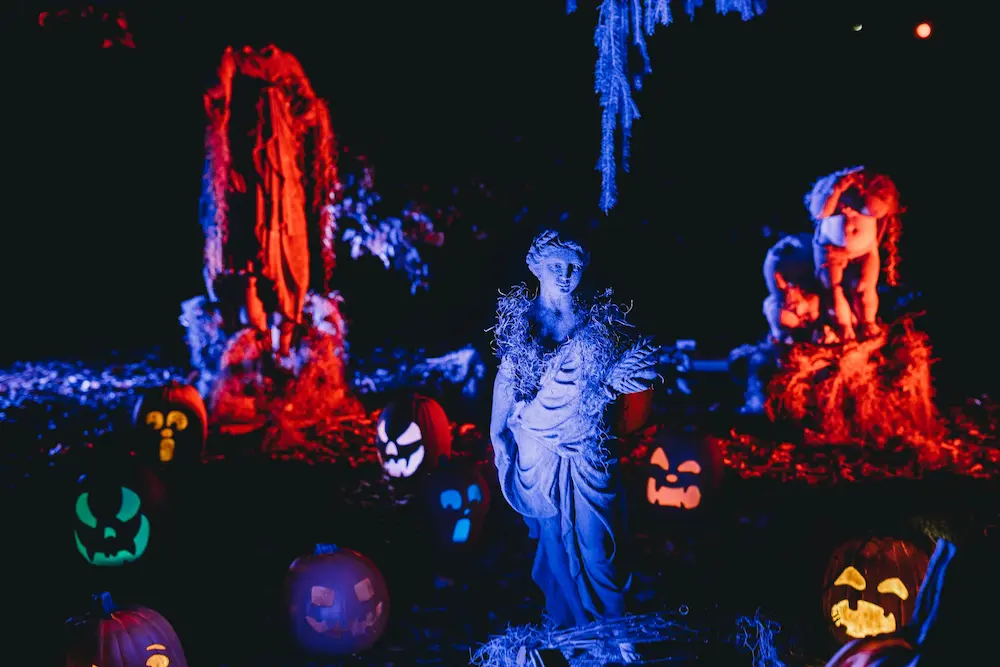
October
Opet Festival (September/October with a duration of 27 days)
The Opet Festival was held in Thebes (modern-day Luxor) and honored the god Amun-Ra, his consort Mut, and their son Khonsu. The festival involved a grand procession from the Karnak Temple to the Luxor Temple, accompanied by music, dancing, and offerings. It was a time to reaffirm the divine power of the pharaoh and seek the gods’ blessings.
Khalkeia (26th October):
Greek festival honoring Hephaestus, the god of blacksmiths and artisans, with offerings and festivities related to craftsmanship.
Samhain (October 31st – November 1st):
Samhain is a significant festival associated with the end of the harvest season and the beginning of winter. It is the quintessential “sabbat of the witch”. It is a time to honor the ancestors, remember the deceased, and reflect on the cycle of life and death. It is also seen as a time when the veil between the worlds is thin, allowing for communication with spirits. Most modern witches typically consider this their New Year, and the resetting of the nature wheel.
Winter Nights, Vetrnætr and Álfablót (Late October 28 days post-Autumn Equinox)
Winter Nights, also known as Vetrnætr, marked the beginning of the winter season. It was a time to honor the deities with your community, particularly the fertility goddess Freyja and the spirits of the land. Offerings were made to ensure a bountiful harvest, and bonfires were lit to ward off evil spirits. Álfablót were the elven + Vanir offerings that you could perform at home or in private, and the Vetrnætr meant for the first three days of autumn to winter where if it was a snowy period then it would be a cold and snow-heavy winter.
The Morrigan & The Dagda (October 31st)
On the night of Samhain, the Morrigan and the Dagda, two of the most powerful gods in Irish mythology were honored in a fertility ritual. The Morrigan was associated with war, death, and transformation, while the Dagda represented abundance, strength, and protection. This was a time to give thanks for the multitude of blessings in life to ensure fruitfulness in the year to come.
November
Calan Gaeaf (November 1st):
Calan Gaeaf, also known as the Welsh Halloween, is a festival marking the beginning of winter. It is associated with the spirit world, divination, and honoring the departed. Traditions include lighting bonfires, carving turnips (or later, pumpkins), and playing games to ward off evil spirits. The community also use a Mari Lwyd for the festivities, but also bring out the Mari Lwyd for Christmas and New Year too.
Lunantishees (November 11th):
Faeries known as Luna-Nishee were said to roam Ireland on this night to protect the harvest from evil spirits. In some areas, it was seen as bad luck to cut down trees on Lunantishees, especially blackthorn, as they were believed to be inhabited by faery folk. This day is honoured by tying black ribbon around the trees, and wishing the Fae themselves luck.
Hekate’s Night (November 16th):
Hekate’s Night is a time to honor the goddess Hekate, also spelled Hecate, associated with magick, crossroads, and the liminal spaces between realms. Interestingly, the goddess of witchcraft can be worshipped every dark moon with a supper (known as the Deipnon), she is celebrated on August 13th, November 30th, January 31st and May 26th.
Baba Yaga’s Feast Day (November Full Moon and January 20th):
Baba Yaga was an old Russian folkloric goddess known for her magickal powers and wild spirit. The tradition of honoring her on the night of the full moon has been kept alive by modern-day witches who make offerings to the crone goddess in gratitude and reverence. Offerings such as sheafs of corn, luscious foods, “things” and general clutter, as well as uncomfortable spellwork (shadow work, banishment, protection) are all areas that Baba Yaga shows up. As a goddess with crone knowledge, supported by the astrology of the cosmos, this slavic deity shows up to help us gain insight and clarity on the hidden side of life and the darkest forests of ourselves.
December
Bona Dea (December 3rd):
A welfare festival in Roman associated with a “good goddess” known as Bona Dea, also associated with Faunus and Dionysus. Women were the only ones allowed to celebrate this festival, so it was a time of female bonding, healing rituals, all exclusively female, headed by the Vestal Virgins and the female relatives of the city magistrates.
Eponalia (December 18):
Roman festival honoring the goddess Epona, associated with horses, fertility, and protection. Typically falling close to Saturnalia, a festival so big it overshadows most festivals around midwinter, this festival was revered not just in the Roman rule or even British Isles, but as far out as Morocco and France. Offerings on this date recorded as ground meal known as mola, roses in stables, and horse effigies.
Saturnalia (December 17-23):
Saturnalia was a festival dedicated to Saturn, the god of agriculture and liberation. It was a time of merrymaking, feasting, gift-giving, and temporary suspension of social norms. Slaves were allowed temporary freedom, and there were festivities such as gambling, processions, and role reversals
Yule and Winter Solstice (around December 21):
Yule was one of the most important ancient celebrations, marking the rebirth of the Sun and the return of light. It involved feasting, drinking, gift-giving, and honoring the gods, particularly The Holly King, The Oak King, Hades, Pluto, Persephone, Odin and Thor. Yule was a time of community gathering, storytelling, and merriment.
Compitalia (December/January):
Compitalia was a festival celebrated at the crossroads (compita), primarily in Rome and its surrounding regions. It involved offerings to the Lares, who were the household deities and guardian spirits of the crossroads. The festival was associated with family, fertility, and protection.
The Festival of Sokar (December/January):
The Festival of Sokar honored the funerary god Sokar, associated later with Osiris, who represented resurrection and rebirth. It involved processions and rituals at his cult center in Memphis, including the “raising of the djed pillar” ceremony symbolizing stability and renewal.
Hunting The Wren (December 26th to January 12th):
A celtic tradition, celebrated from the Isle of Man to Ireland to Wales, where the community gathers to hunt the wren and bring it back to their village with music. A symbol of rebirth, this was a time for community bonding, feasting, and sharing stories. Offerings were made in gratitude and reverence for the birds generosity of life, with themes of light defeating dark that we see through the solstice in other historical cultures.

This list will be constantly updated so feel free to sign up to the newsletter to learn when new stuff is added to the website!
In the interim… Happy Celebrations! 🌿❤ Until next time xox

I love curating divination experiences for those invested in spiritual growth with secular honest vibes. I am that witch you come to for these genuine, interesting and beneficial divination experiences! You can always book a session with me directly to discover yourself 🙂
Delve deeper into the world of witchcraft ✨
This page is part of our collection of witchcraft articles. If you enjoyed the read, then you’ll love the following articles.
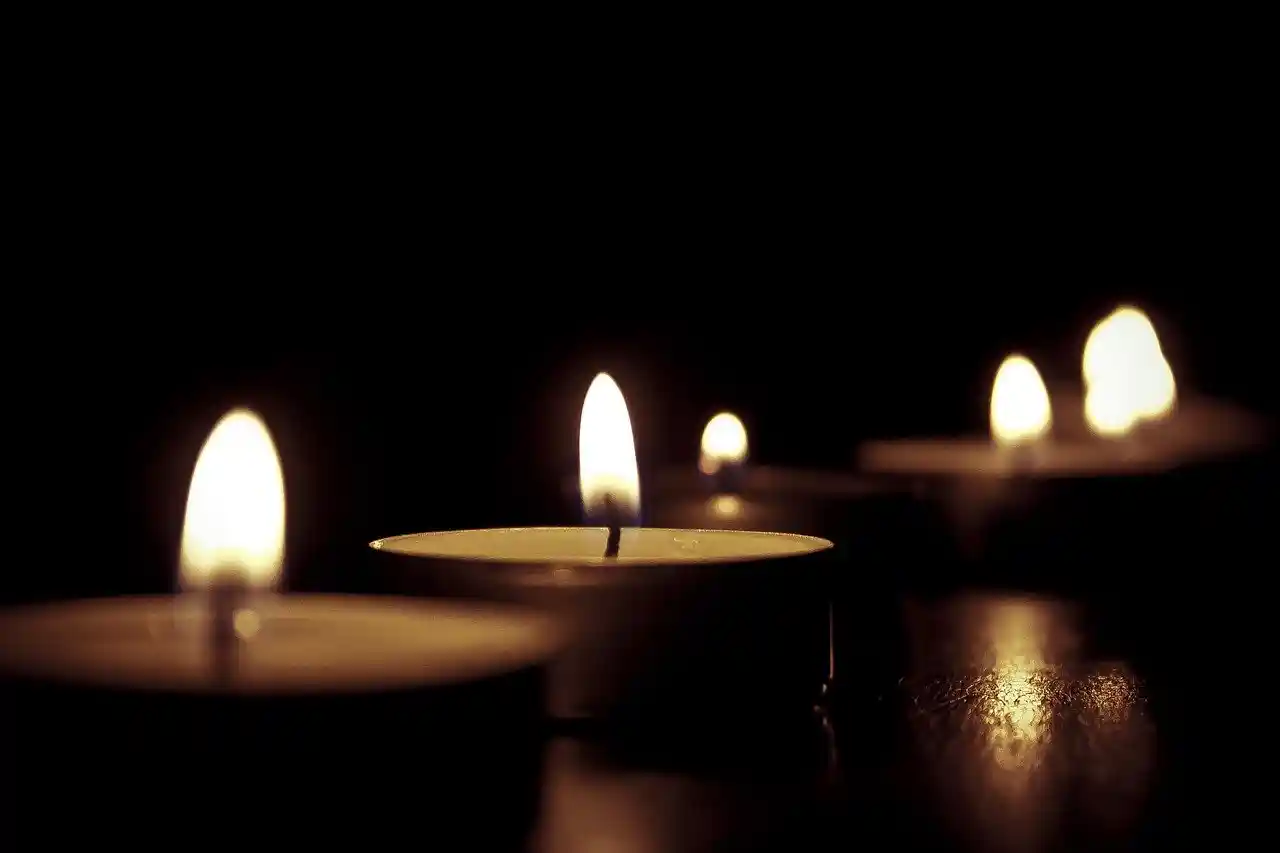
What is secular witchcraft? It is a form of witchcraft that does not draw upon any religious beliefs.
What is divination witchcraft? Who is a divination witch? As a form of witchcraft that has been respected for centuries, read in full here.
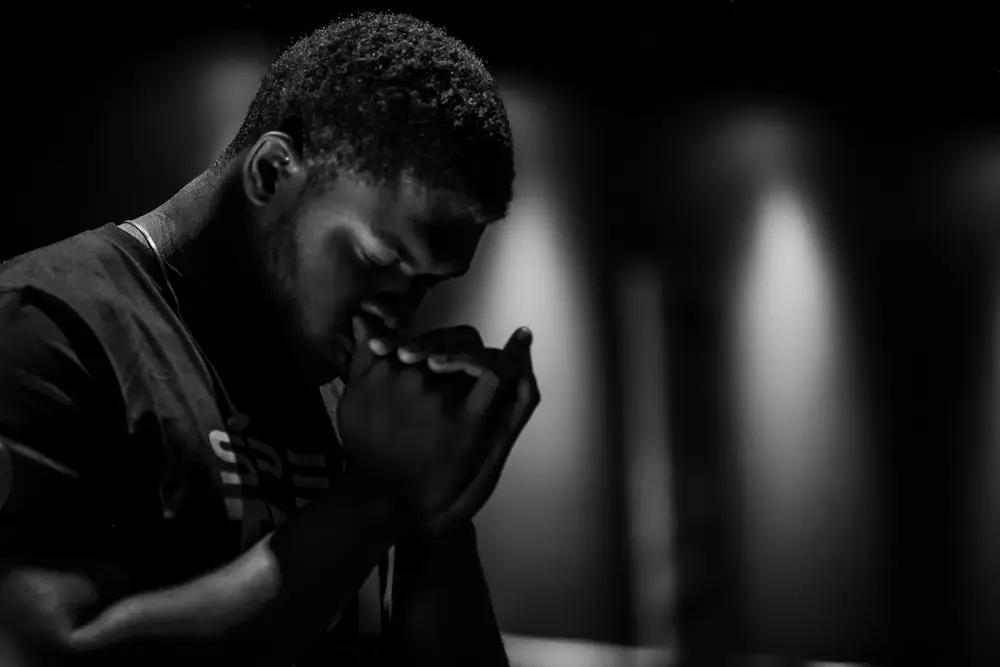
In this collection of New Moon prayers, the air element ruling speech combines with beautiful lunar intent. Find your perfect new moon prayer here.

Here I share with you multiple different methods of divination that you may find deepen your understanding of self and community.

